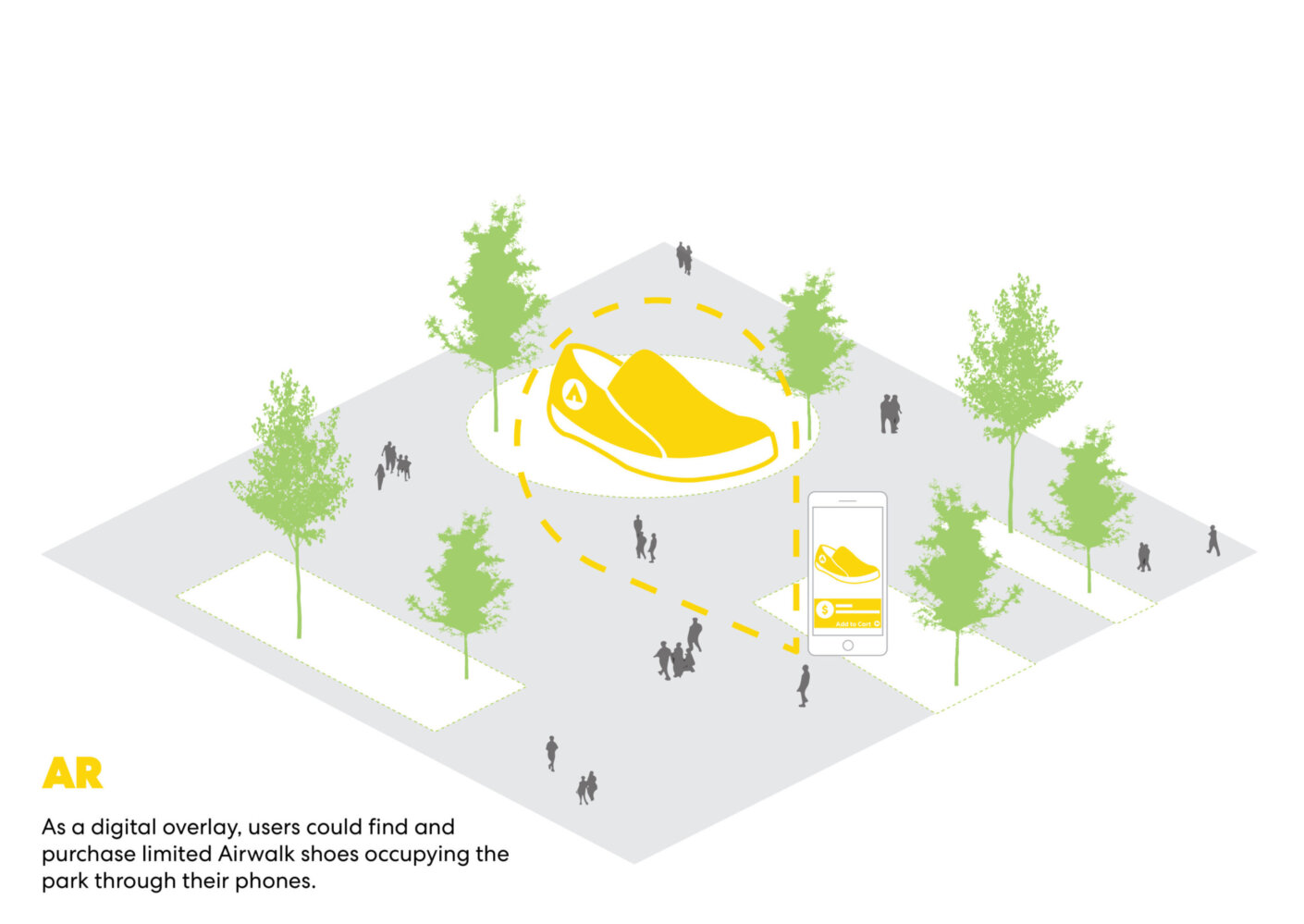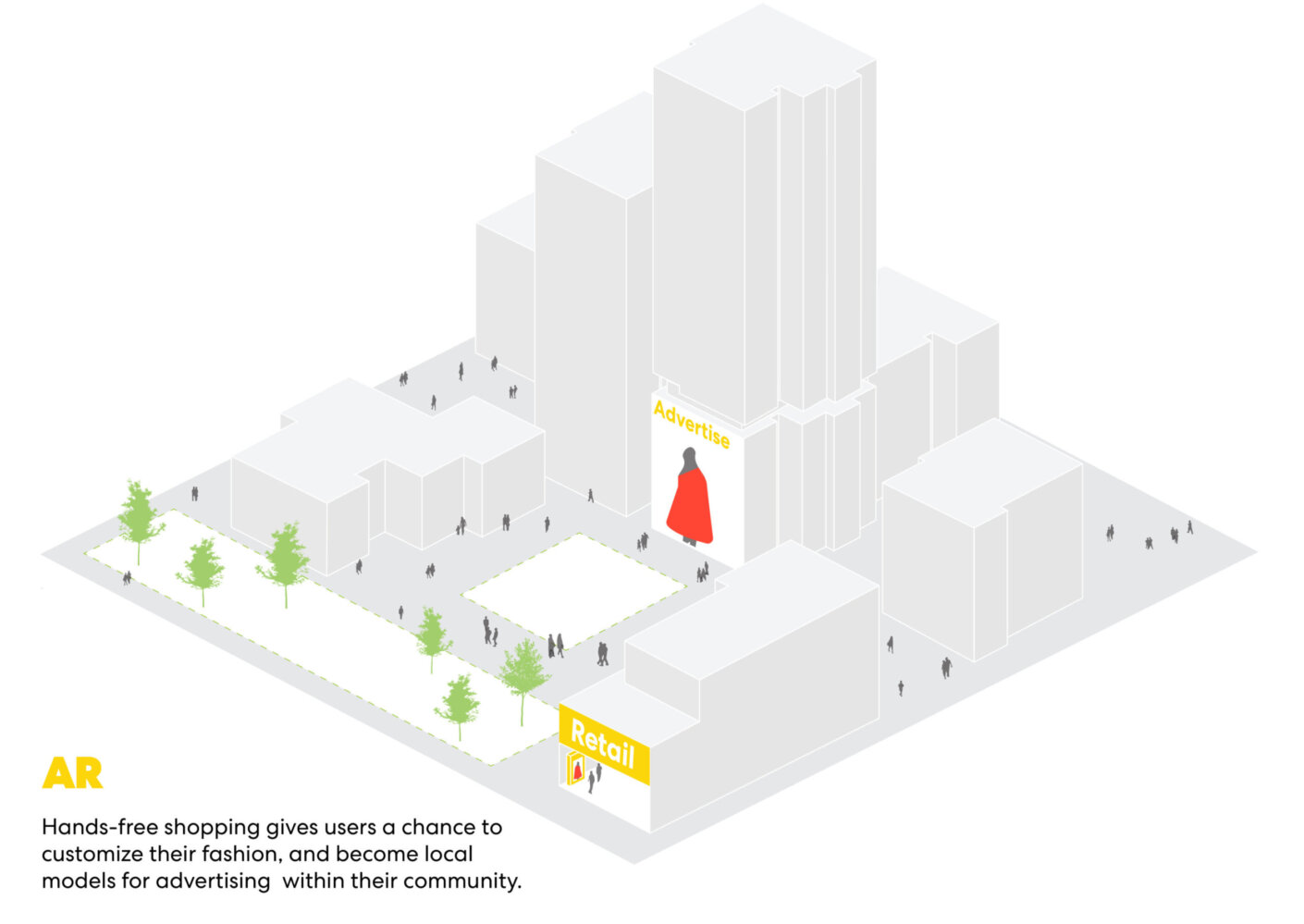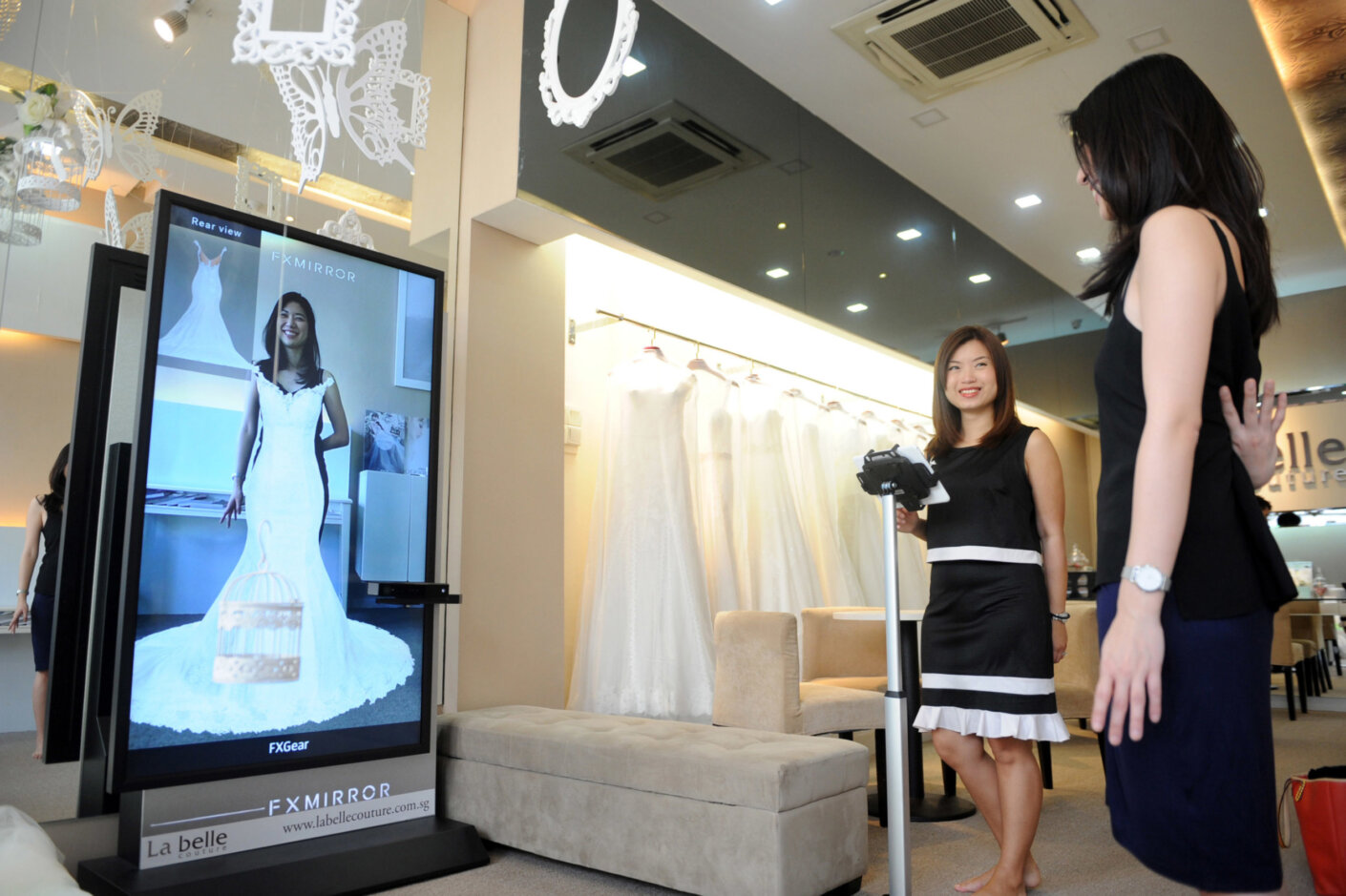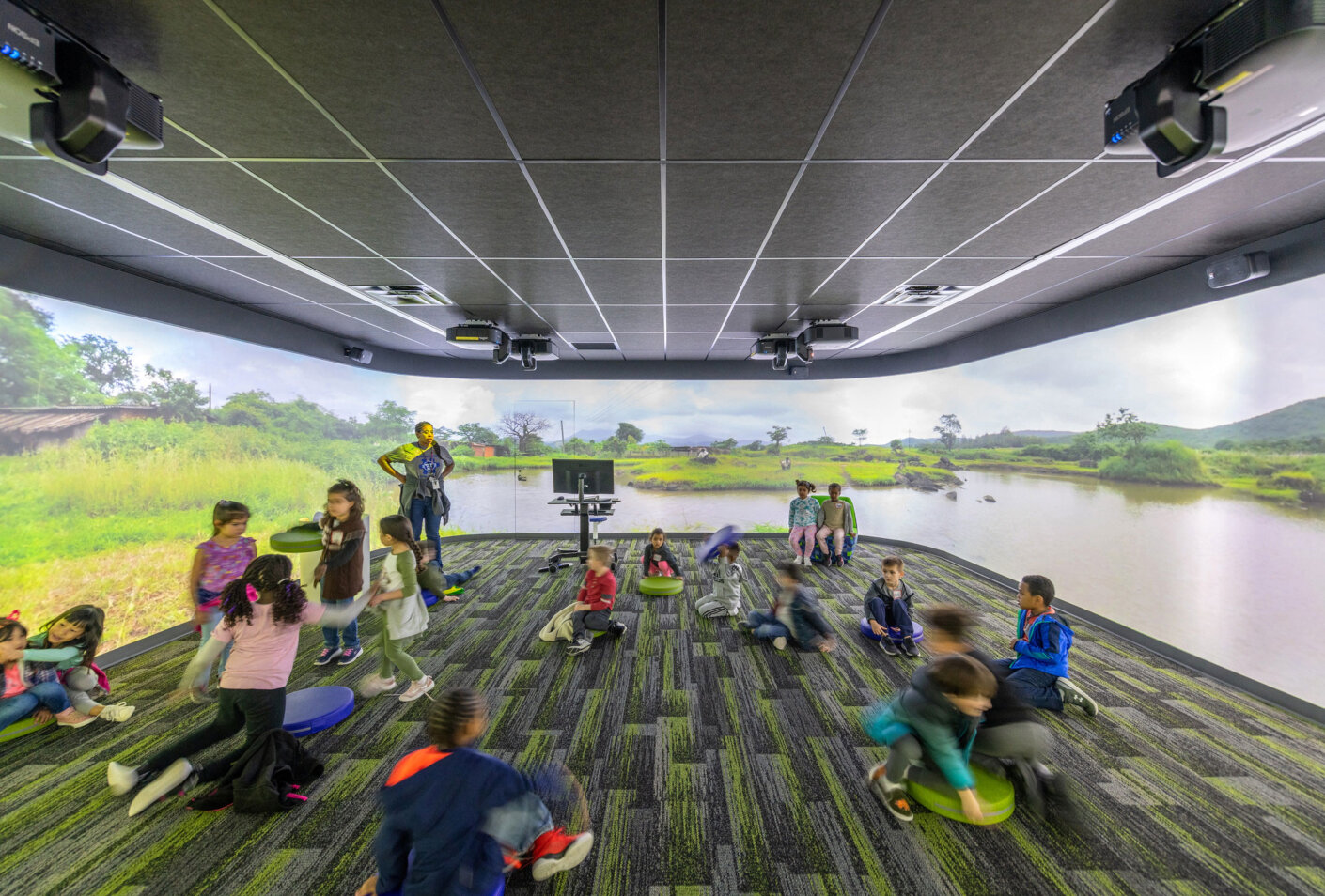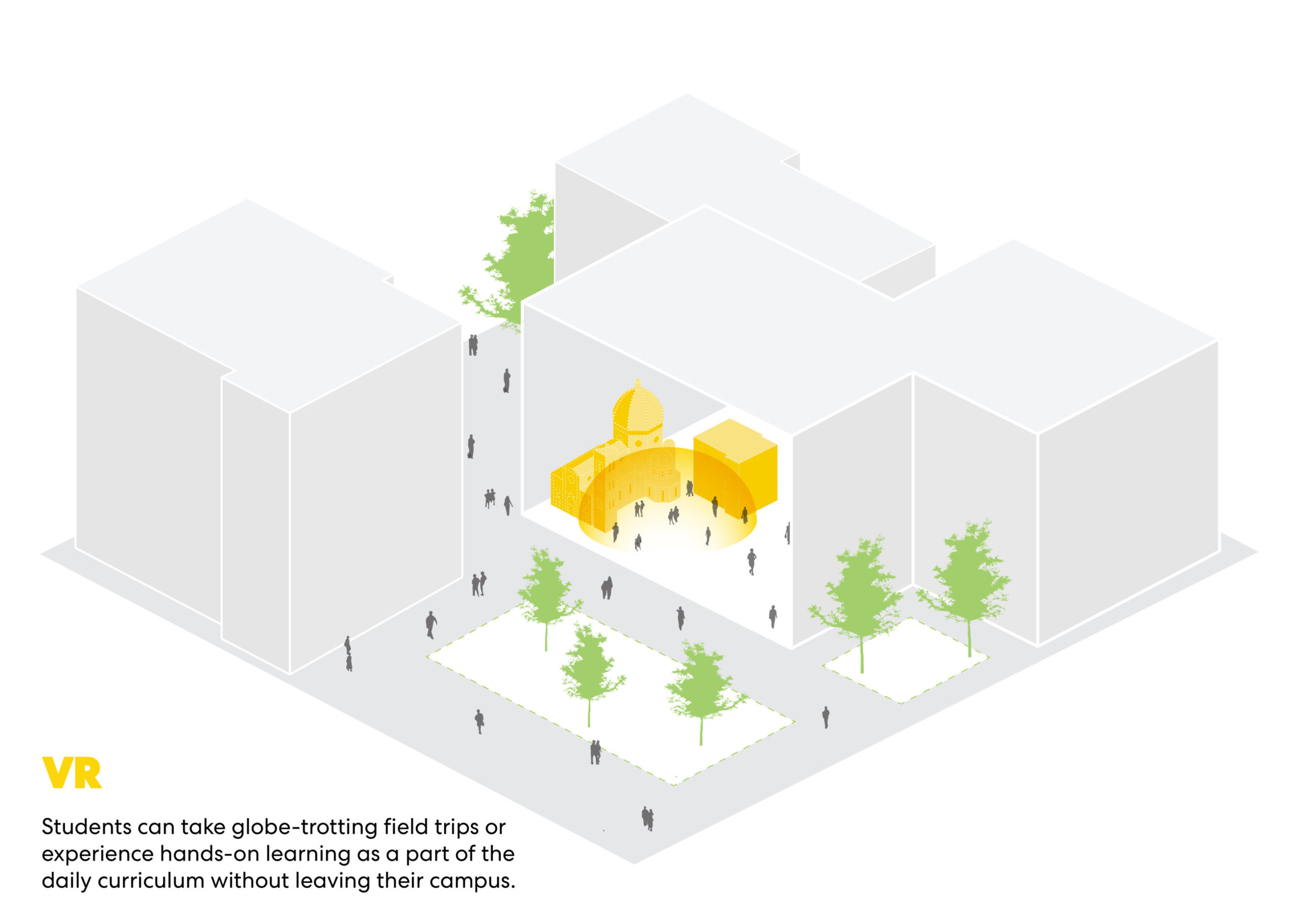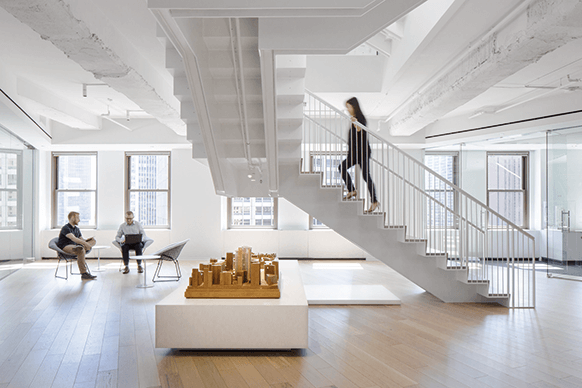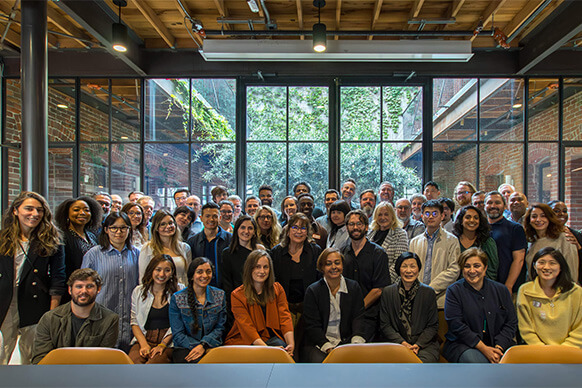Expanding Cultural Offerings Beyond the Museum Walls
Cultural institutions have archives for pieces that cannot always be shown to the public, due to limited gallery space. Using AR/VR, a museum’s content is no longer limited by its walls. If incorporated into the design of a cultural building, archived content can extend beyond the building, continuing the experience into the surrounding city. Deploying this across the city could create engagement opportunities with local business or boost activity in curated public spaces. This could apply to traveling exhibits with extensive content, or a simultaneous global release of an artist’s exhibition. As large group gatherings and travel cause concern in the years immediately following the Coronavirus outbreak, architects and cultural institutions can seek ways to collaborate on bringing museum experiences to visitors digitally: and in doing so, reach a wider global audience.
Taking the museum concept one step further, this use of technology could be applied to conventions, conferences, or sporting events. Here, games or presentations are applied to open spaces that bring local access to a global experience. Imagine instead of sitting in a bar and watching a distant sporting event on a small TV, you could sit outside and watch it to scale in a park? In this vision, stadiums around the world could even show Olympic events to viewers locally, serving as multimedia event centers year-round when there are no physical games scheduled.
The societal impacts of COVID-19 will force us all to rethink how we interact with spaces and with each other. Based on recent examples of how augmented and virtual reality have begun to impact retail, urban, educational, and cultural experiences, architects and urban designers must find ways to incorporate this technology into our work. These collaborations will improve outcomes and resiliency for clients and communities, as we all navigate a post-pandemic world together.


